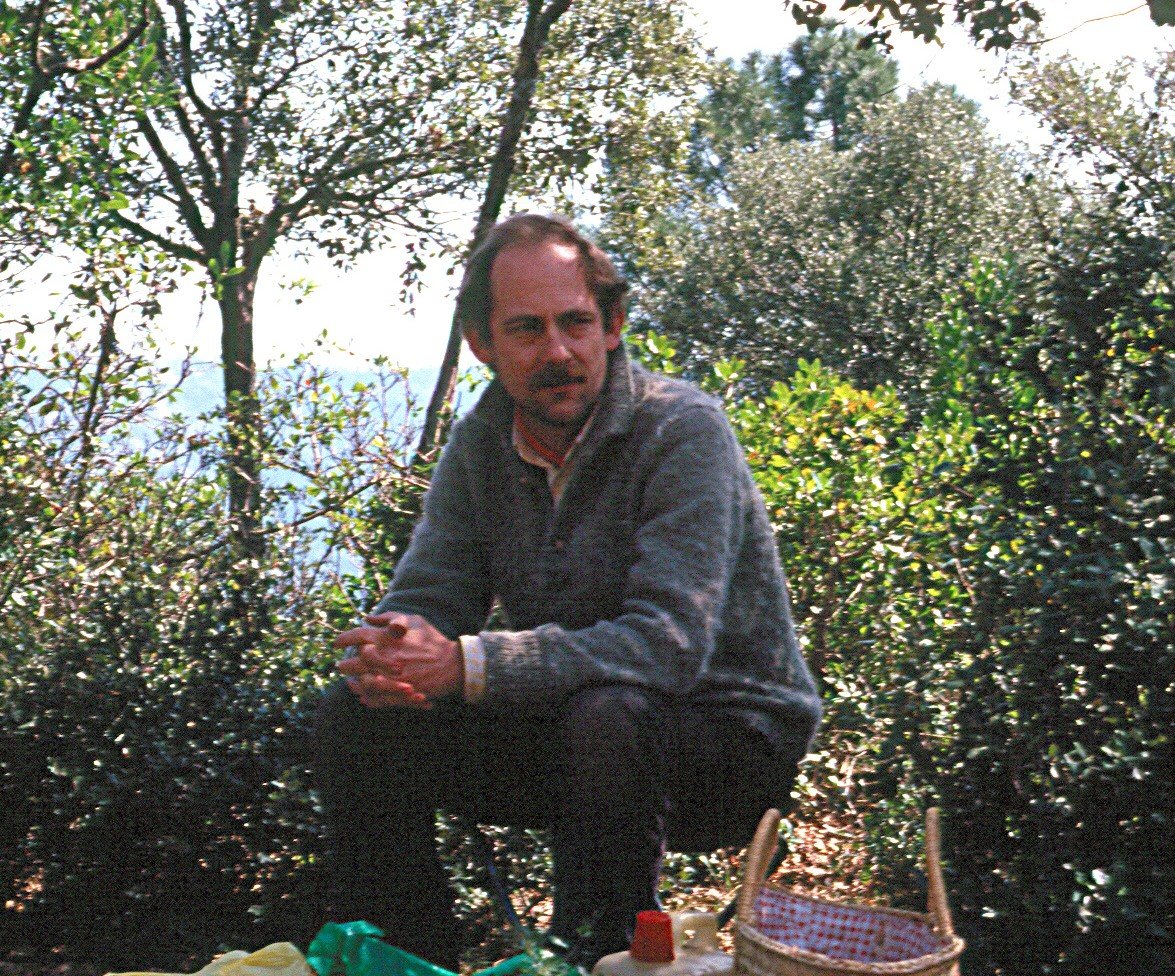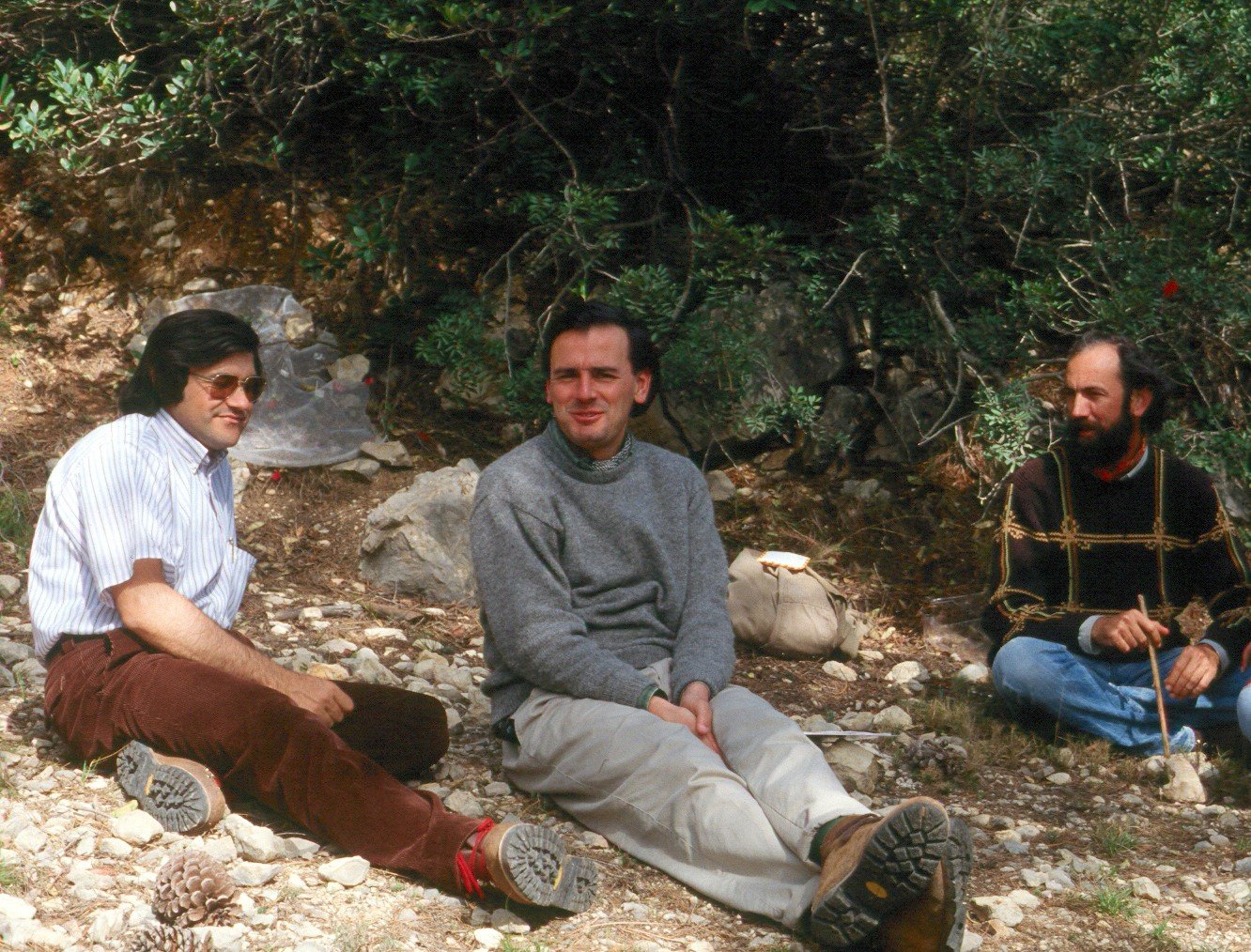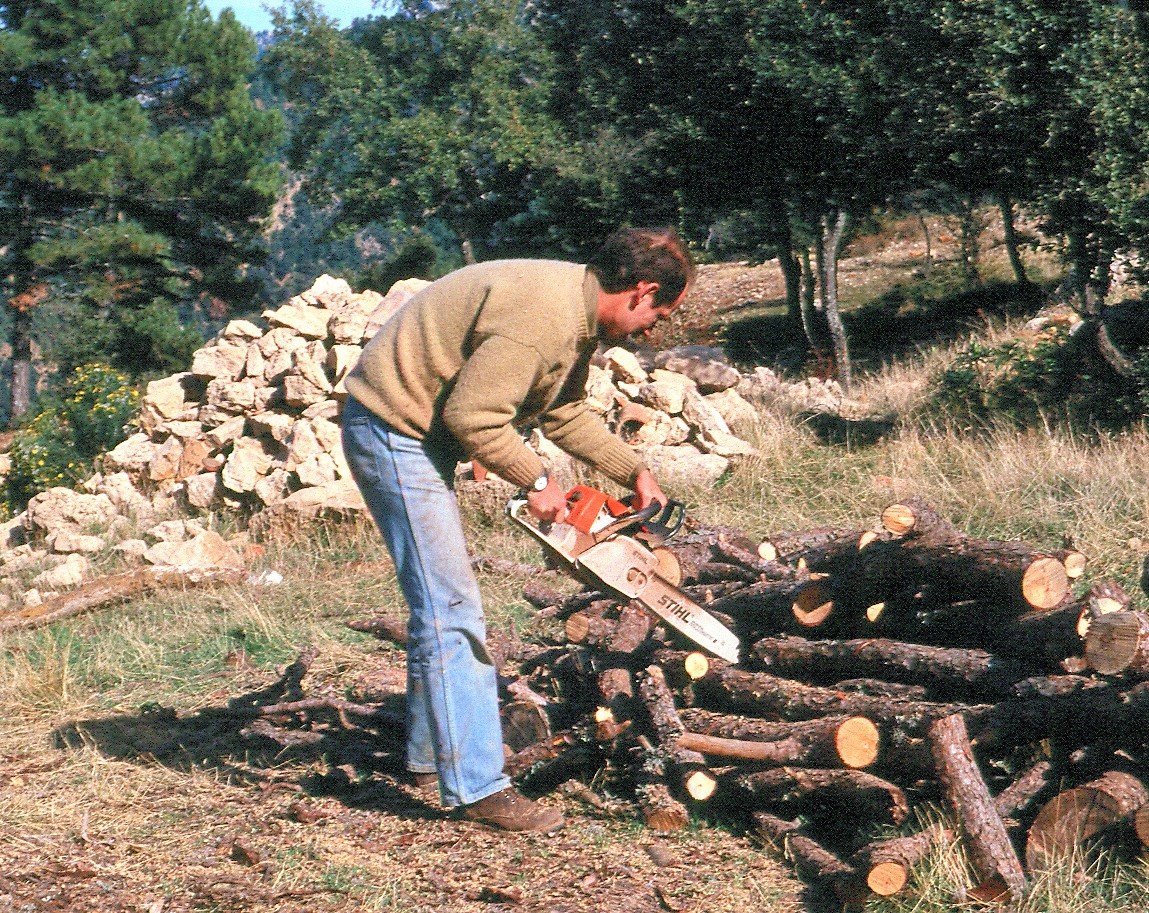In a paper published in Ecological Monographs in 1994, Carlos Herrera, Pedro Jordano, Luis Lopez-Soria and Juan Amat used a combination of observational and experimental approaches to describe the seed dispersal cycle (frugivory to recruitment) of Phillyrea latifolia, a bird-dispersed mast-fruiting tree. Twenty-three years after the paper was published, I asked Carlos Herrera about his motivation to do this study, field work and writing, and the impact of this study on seed dispersal ecology.
Citation: Herrera, C. M., Jordano, P., Lopez-Soria, L., & Amat, J. A. (1994). Recruitment of a mast‐fruiting, bird‐dispersed tree: bridging frugivore activity and seedling establishment. Ecological monographs, 64(3), 315-344.
Date of interview: Questions sent by email on 4th March 2017; responses received by email on 29th March 2017.
Hari Sridhar: At the time of this paper, you had already been working on this system for over a decade. What was the motivation to write this particular paper at this stage in the study?
Carlos Herrera: I started to work on fruits and frugivores in the Sierra de Cazorla area in the fall of 1978. In 1981, I had, for the first time, the opportunity to witness a massive spring flowering, and then an autumn fruiting event, by Phillyrea latifolia. I was absolutely amazed by the spectacular phenomenon, as all trees were in flower, and later in fruit, over countless hectares. By then I was well aware of the concept of ‘mast fruiting’ as applied to dry-fruited plants like oak or beech, but had not heard about any similar instance for fleshy-fruited plants. In principle, satiation of mutualists did not seem to me a reasonable strategy for a fruiting plant, which spurred my curiosity. In the years following 1981, I kept waiting patiently for another massive flowering event to take place, so that a study on the seed dispersal consequences of massive fruiting could be planned and undertaken. That finally happened in 1989, and we went ahead with our study that year.

Carlos Herrera sitting in the shade between consecutive mist net checks. April 1990 (© Manolo Carrión)
HS: Stepping back a bit, how did you get interested in seed dispersal, particularly in the context of the mast-fruiting tree Phillyrea latifolia, which is the focus of this study?
CH: Overabundance of fleshy fruits in autumn-winter, and of overwintering birds that feed on them, are two obvious features of evergreen Mediterranean-type scrublands and forests in southern Spain. It was obvious to local observers, yet remained unreported in the ornithological or ecological literature. From childhood I had been interested on birds, and then I was trained as an ornithologist. The phenomenon of bird frugivory in Mediterranean scrublands of southern Spain always had attracted my attention, so at the first opportunity after completing my PhD (on bird community ecology, by the way) I started working on plant-frugivores interactions at the community level at two locations in southern Spain, one in lowlands and the other in the Sierra de Cazorla highlands, where the study on P. latifolia was done.
HS: How did the group of authors on this paper (Herrera, Jordano, López-Soria and Amat) come together and what did each bring to the paper? Did the four of you meet often during the making of this paper?
CH: Except for López-Soria, who was associated with Barcelona Autonomous University, the rest of us worked at Estación Biológica de Doñana in Sevilla, and at the time were close friends in and out of work. All of us were doing some ecological research in the Sierra de Cazorla area and, most importantly, shared living facilities there, which gave ample opportunity for discussion and exchange of ideas. Hence the idea of planning and doing some study on that unusual mast-fruiting tree as soon as another massive event took place came out naturally from our discussions and conversations. Amat was (and he still is) an active ornithologist, and he did all bird census work. López-Soria was a plant ecologist particularly interested in plant demography, and he was really good at experimental design, which was a crucial aspect of the study. Jordano and me brought to the team our experience with fruits and frugivores. Throughout the field work stage of the study, we met at least once per month to work together at Cazorla.

From left to right, Luis López-Soria, Pedro Jordano and Juan A. Amat. February 1990. (© Carlos Herrera)
HS: Could you give us a sense of the work that went into the observational and experimental parts of this study – what was your daily routine at that time, where did you stay, when you think back to those times what memories strike you, who helped you with the work etc.?
CH: Our study area was a remote place about one hour drive by gravel roads from the nearest civilized place with food stores, telephone, and so on. We were housed there at a decaying, century old house that had previously been the abode of forest wardens, which played the role of modest field station in the middle of nowhere. No telephone, no heating system, no warm water, roof leaks, terribly uncomfortable beds, but the evening meetings in front of the fire place were an unbeatable pleasure that compensated for these and other inconveniences.

Carlos Herrera making firewood with the chainsaw. October 1989. At 1300 m elevation, in autumn-winter the field station became a very cold place at night, and firewood was the only combustible available to warm us. Making firewood was one of my frequent jobs in late afternoon, upon returning to the house after field work. – Carlos Herrera (© Manolo Carrión)
HS: How did you choose to work in the Guadahornillos valley? Do you continue to work there till today? When was the last time you visited this site? In what ways has this area changed since you worked there for this study?
CH: I first visited the Guadahornillos Valley area during a hike with family and friends in 1977, and its beautiful, largely undisturbed forests and scrublands made me to suddenly fall in love with that 2,500-ha valley of unique ecological and aesthetic features. At that time, I felt that well-preserved Mediterranean montane forests and scrublands should look like Guadahornillos, and I’m still of the same opinion. Now, 40 years later, I’m still doing work regularly in the area, that has since become part of a Nature Reserve (with a little help from yours truly). The field station is now being operated by my home institution and, although still a comparatively modest one, users benefits from warm water, a heating system and energy from solar panels, luxuries amidst a wild environment.
HS: Could you tell me a little more about the people you acknowledge in this paper – how you knew them and how they contributed:
- M. Carrion
- L.M. Carrascal
- E.W. Schupp
- M.A. lonso
- A. Benavente
- C.K.Ausperger
- C.J. Whelan
CH: Manolo Carrión was our technician at the time, and he helped decisively with almost everything in the lab and the field, from purchases to setting up mist nets or weighing seeds. His help was essential to our work. Chris Whelan was one of the reviewers of the manuscript, which we knew because he signed his review. Carol Augspurger was the subject editor. Both of them made helpful suggestions that improved the paper, so we included their names in the acknowledgements section. Alfredo Benavente helped to make arrangements for using the Torre del Vinagre Botanical Garden for setting up some experiments.
The rest of persons listed were friends or colleagues that either came to visit us at the field site and helped occasionally in field work or provided suggestions during the planning and writing stages. I’m sorry that I can’t remember now, so many years after, in which way each of them specifically helped us.
HS: You say “People that helped in one way or another during the course of this study are too numerous to mention individually.” Without mentioning them individually, could you say a little, collectively, about who these other people were and how the helped?
CH: The study involved vast amounts of field work over an extended time period, so anyone showing up at the field station even for a couple of days was at risk of being immediately persuaded to help us. This included our respective wives and sons, most of whom spent some time of their holidays helping with seed trap checks or handling mist-netted birds.
HS: Approximately, how long did the writing of this paper take? When and where did you do most of the writing? How did the authors communicate during the writing?
CH: I can’t ascertain how long it took us to write the paper, but it was perhaps around 3-4 months. Jordano and I did most data reduction and organization, and all analyses and writing. Each one of us was committed to writing and analyzing about half the paper, so we progressed rather rapidly. As we had contiguous rooms opening to a shared lab space, communication between us was always easy and immediate, and during writing discussions took place almost daily at mid-morning coffee time. Nearly-final drafts were sent to the other two authors for approval/suggestions.
HS: Did this paper have a relatively smooth ride through peer-review? How did you decide to submit this to Ecological Monographs?
CH: It was a very long manuscript, so submitting to Ecological Monographs was clearly the first choice coming to mind. We submitted it in early July 1993, and the decision letter arrived two months later, which was a fast response for such a long piece. The two reviewers were quite positive about the study. Although they asked for many changes, they were mostly of an editorial nature, which were easily incorporated in just a couple of weeks. Essentially, most changes had to do with shortenings. We submitted the revised version by the end of September and acceptance came in only one month later. The whole editorial process took only about four months and it certainly was a smooth ride.
HS: Do you remember how this paper was received when it was published? Did it attract a lot of attention?
CH: Two decades back, when our paper appeared, there was not anything like Facebook, Twitter, Google Scholar or any other of the current ways for quickly ascertaining whether some publication has had some short-term impact on the audience. It was not possible to know how the paper was received when it was published, or at least I couldn’t. In fact, in those times few of us cared about citations, and life was, in this respect, more enjoyable for researchers than it is now, when hectic immediacy tends to prevail over reflexive pondering.
HS: In what way did this paper influence the future course of your research, both in the short and long-term? Would you say this paper had a big impact on your career?
CH: I don’t think that paper had any influence on the subsequent course of my career, and guess that the same probably applies to the rest of authors.
HS: Today, 23 years after it was published, and considering all the work you have done since then, would you say that the main findings still hold true, more-or-less? If you were to redraw Fig. 4, how different would it look?
CH: I discontinued research on plant-frugivore interactions shortly after completing our work on Phillyrea.This means that I have been rather disconnected from the relevant literature for a long time. I don’t know, for instance, which are the current hot topics in the field (or even if there are some, actually), so I’m not the right person to comment on whether our findings have been upheld by subsequent studies or not. In view of the sustained citations received by the paper, however, my tentative guess is that it is still being found relevant by researchers.
HS: As a thought experiment, if you were to redo this study today, would you do anything differently?
CH: I think the study would be considerably strengthened if inferences on the fate of seeds from different parents could be backed by application of molecular methods currently available, in particular parentage analysis based on molecular markers.
HS: This paper has been cited close to 550 times. At the time of the study, did you anticipate at all that it would have such a big impact? Would you know what it is mostly cited for?
CH: At the time of the study, most researchers in ecology had not yet fallen prey to that insane obsession with citations that now plagues the field, so we did not even consider that possibility of becoming highly cited. We did know for certain, however, that ours was the first study to consider simultaneously every aspect running from fruit removal to seedling establishment, the “bridging frugivore activity and seedling establishment” sentence from the title. I guess this completeness in our approach, along with the incorporation of a strongly experimental approach, are ultimately responsible for the popularity enjoyed by this paper.
HS: This study was the first to describe the “dispersal ecology of a mast-seeding, fleshy fruited plant.” Have there been studies on other similar plants since then?
CH: Fleshy-fruitedness and masting is an infrequent combination in plants, which should not surprise us, since satiating mutualists does not seem an evolutionarily stable strategy. I vaguely remember some work done in Sweden and Spain on the tree Sorbus aucuparia, which produces highly fluctuating fruit crops as does Phillyrea.
HS: This paper reports on the masting events of 1981 and 1989? Has there been regular masting since then, and have you continued to monitor and study this phenomenon?
CH: I kept following marked trees until 2011, and recorded several massive flowering and fruiting events over that period. I have an uninterrupted 31-year sequence, running from 1981 to 2011, of flower and fruit production data by individual trees, waiting in my endless queue of ‘to write’ tasks.
HS: In the paper you quote Howe: “The implied marriage of animal foraging with plant demography is rarely consummated.” Could you reflect on how much the situation has improved in this regard today?
CH: As noted above, I got divorced from plant-frugivore studies many years ago and am not acquainted with current work in that area, so I shouldn’t dare to answer this question.
HS: Have you ever read this paper after it was published? If yes, in what context?
CH: Don’t’ ask me why, because I don’t know the answer, but the fact is that I never read again any paper of mine past the proof correction stage. This paper was not an exception to the rule, I’ve never read it again.
HS: Would you count this paper as a favorite, among all the papers you have written?
CH: Not quite. I’ve written about 200 papers so far, and there is a selected handful of other papers I am equally or more fond of them. Some of my publications that I like very much are not particularly highly cited, so I guess my tastes and those of the audience don’t necessarily match, something I do not care about even minimally, of course.
HS: What would you say to a student who is about to read this paper today? Would you guide their reading in anyway and point them to other papers they should read along with this one? Would you add any caveats?
CH: Do students nowadays have time to read a 30-page paper from beginning to end ? I’d like to meet one. Now seriously, I would draw her attention to the fact that this study was weaved around a number of distinct conceptual and methodological (observational + experimental) pieces, none of which was particularly innovative if considered singly. It was their combination into a complex design, guided by simple natural history considerations, that resulted in a innovative work. Putting together elements that are usually considered in isolation is, in my opinion, one of the pathways to reach innovative results in ecology, and students aiming to pursue a research career should be aware of this.

0 Comments